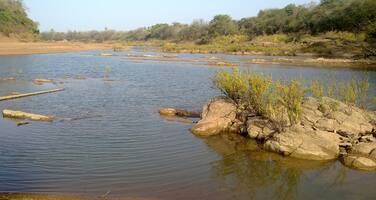Niokolo-Koba National Park
Factors affecting the property in 1986*
- Ground transport infrastructure
- Illegal activities
International Assistance: requests for the property until 1986
Total amount approved : 42,845 USD
| 1986 | Additional cost of radios ordered in 1985 for ... (Approved) | 6,196 USD |
| 1985 | Purchase of 4 portable radios for protection programme ... (Approved) | 9,618 USD |
| 1982 | Vehicles, camping equipment and radio communication ... (Approved) | 27,031 USD |
Missions to the property until 1986**
Conservation issues presented to the World Heritage Committee in 1986
A new road across this park has been proposed.
Already suffering from intensive poaching the road could open up the park to further depredations.
An alternative route has been suggested.
Summary of the interventions
Decisions adopted by the Committee in 1986
10 COM IX.A.14-15
Monitoring of the State of Conservation of the World Heritage Natural Properties
14. As in previous years, IUCN reported on the conservation of natural properties inscribed on the World Heritage List and the List of World Heritage in Danger. An information document (CC-86/CONF.003/INF.4) prepared by IUCN presented up-to-date information on some 16 natural properties.
15. The Committee was glad to learn of improvements or of a stabilisation in the previously deteriorating situation of certain properties, notably Djoudj National Park (Senegal), Ngorongoro Conservation area (Tanzania) and Garamba National Park (Zaire) (all inscribed on the List of World Heritage in Danger). Improvements were also noted for the Great Barrier Reef Marine Park (Australia), Pirin National Park (Bulgaria), Manas Tiger Reserve (India), Niokolo Koba National Park (Senegal) and Aldabra Atoll (Seychelles). The Committee requested IUCN to keep it informed of the conservation status of Iguazu and Los Glaciares National Parks (Argentina), Mt. Nimba (Guinea/Côte d'Ivoire) and Ichkeul National Park (Tunisia).
No draft decision proposed
Exports
* :
The threats indicated are listed in alphabetical order; their order does not constitute a classification according to the importance of their impact on the property.
Furthermore, they are presented irrespective of the type of threat faced by the property, i.e. with specific and proven imminent danger (“ascertained danger”) or with threats which could have deleterious effects on the property’s Outstanding Universal Value (“potential danger”).
** : All mission reports are not always available electronically.


